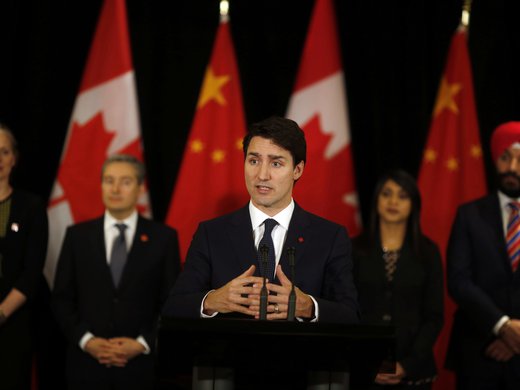On April 26, 2018, Navdeep Bains, Canada’s Minister of Innovation, Science and Economic Development, unveiled the government’s long-awaited intellectual property (IP) strategy, which responds to the need to increase IP awareness, develop new IP tools for businesses and counter IP misuse that harms both consumers and businesses. Following Bains’s announcement, the strategy garnered widespread applause for its holistic approach to IP policy, which recognizes the need to support IP through a combination of better information, administration and corporate practices.
Yet, perhaps the most notable aspect of the policy is the decision to reject a commonly heard refrain: if IP is good, more IP must surely be better.
That policy approach, which invariably leads to an emphasis on restrictive IP enforcement and longer terms of protection, fails to adequately account for other incentives for innovation and the benefits that come from open systems and flexible IP rules. While the Canadian government will undoubtedly continue to tinker with its IP legal framework — an ongoing review of copyright law seems certain to lead to some proposed amendments — the IP strategy moves in several new directions, including countering IP abuse, addressing IP administration and removing IP barriers to innovation.
Countering Intellectual Property Abuse
The IP strategy is primarily focused on tools and awareness, but there are several legislative reforms included. Topping the list are measures to discourage misuse of IP, an approach that should help foster a more progressive, balanced and innovative legal framework. With proposed reforms to all of Canada’s main IP statutes, the government is taking the lead in combating the “dark side” of IP protection. Since abuse of IP rights may inhibit companies from innovating or discourage Canadians from taking advantage of the digital market, crafting rules that address misuse can be as important as providing effective protection.
The Supreme Court of Canada identified the need to address excessive protection in Théberge v. Galerie d’Art du Petit Champlain inc., a 2002 copyright case that warned “excessive control by holders of copyrights and other forms of intellectual property may unduly limit the ability of the public domain to incorporate and embellish creative innovation in the long-term interests of society as a whole, or create practical obstacles to proper utilization.”
An obvious example arises from the misuse of Canada’s copyright “notice-and-notice” system, which was formalized in 2012 to allow rights holders to forward allegations of online copyright infringement to internet users through their internet service providers. The system was viewed as a win-win approach since it promised to deter infringement through education rather than legal threats.
Yet, within hours of taking effect, anti-piracy companies began sending notices that included settlement demands backed by threats of litigation. The government advised the public that there was no requirement to settle, but the absence of regulations opened the door to widespread misuse. Bains now says the government will amend the Copyright Act to ensure settlement demands are excluded from the notice-and-notice process, thereby restoring the original intent of the system.
The IP strategy will also address misuse that arises from patent trolling and trademark squatting. Patent trolling refers to instances when companies that had no involvement in the creation or invention of a patent demand licence or other payments from legitimate companies by relying on dubious patents. Studies indicate that patent trolling has a negative effect on innovation and is a particularly big problem in the United States, which tends to be more litigious than Canada.
The Canadian government plans to combat patent trolling by amending the Patent Act to create new minimum requirements for patent demand letters, which should discourage the sending of deceptive letters. The rules will also require that letters include minimum standards of information to better allow recipients to assess the merits of the claim. The government had been considering measures to address patent trolling for several years, and the IP strategy provides an ideal mechanism for doing so.
Similarly, the government is planning to address a trademark misuse concern identified by experts when the law was last amended. Trademark squatting arises in instances where rights holders register but do not use their marks, potentially as a defensive mechanism to keep others from acquiring or using them. Bains plans to change the law to require trademark owners to use their marks within three years if they wish to enforce the rights associated with them.
The inclusion of anti-IP abuse rules within the government’s IP strategy points to the realization that overprotection of IP can be just as problematic as under-protection. While policy debates around IP typically involve pressure to escalate protections and safeguards, the government has rightly recognized that misuse of IP rights can also have a significant chilling effect on innovation, leaving consumers and smaller innovative businesses caught in the crossfire.
Intellectual Property Administration
The administration of IP attracts little public attention, but creators and users alike depend on efficient IP administration, which promotes investment by innovative companies and facilitates timely payment to creators. Given the somewhat messy politics associated with substantive IP reforms, the government identified a short-term solution in 2017 that appeared to have wide-ranging support. Bains and Minister of Canadian Heritage Mélanie Joly announced that the substantive copyright policy questions would be left to the copyright review, but that the government would move quickly to address the administration of copyright by introducing long-overdue reforms to the Copyright Board of Canada.
The strategy was a political slam dunk because both creator and user groups have expressed frustration with the slow processes at the board, which are said to foster marketplace uncertainty and leave creators waiting years to be paid. A public consultation identified the solutions: more funding for the board; a clear articulation of its mandate; the introduction of case management techniques commonly used in litigation; and strict time limits to stop delay tactics.
Changes are expected to be formalized later this year, but there have been some delays due to internal disputes that threaten to sideline the broader copyright review process as parties gear up for a battle over board reform. The source of the dispute is not the administrative changes to the board. Rather, it is a substantive change that some are pushing for, which would have significant implications for broader copyright policy in that it threatens to create massive liability risks for some copyright stakeholders.
The substantive change at issue is described as “tariff harmonization,” which sounds innocuous but would result in a radical change to copyright policy and pre-empt much of the copyright review work of the industry committee.
Canadian copyright law features two different approaches to the use of tariffs, determined by the copyright board. Some tariffs, such as those for SOCAN (the Society of Composers, Authors and Music Publishers of Canada), are mandatory, owing to concerns over competitive practices. SOCAN must file tariffs with the board, which determines the appropriate rate. Since the filing with the board is mandatory, the law provides for the possibility of a statutory damages multiplier, meaning that users that fail to pay the prevailing tariff may owe several times more than the actual licensing fee. This multiplier helps foster compliance, sets a cap on statutory damages and represents a quid pro quo for the mandated filing approach.
Alternatively, for some tariffs, such as those involving Access Copyright, the use of the board is optional. This approach to tariffs leaves it to rights holders to determine if they want to privately negotiate their rates or have the board establish a rate for the market. Since the process is optional, there are no statutory damages multipliers in effect.
Despite the obvious differences in approach, the government is considering “harmonizing” the two approaches, by granting statutory damages multipliers to both the mandatory and the voluntary tariff systems. This harmonized approach would not only undo the policy rationale behind multipliers for statutory damages within Canadian copyright, but also have a dramatic impact on substantive copyright issues such as fair dealing. The better approach would be to stick to administrative reforms in the strategy and leave substantive reforms to the copyright review.
Removing Barriers to Innovation
The strategy also features plans for an innovative approach to reduce IP barriers for small and medium- sized firms. Rather than emphasizing the pro-innovative potential of IP, the strategy acknowledges that IP such as patents can be potential barriers to innovation, particularly for small and medium-sized enterprises. To address the concern, it proposes creating a patent collective, described as follows: “This collective, bringing together firms through a membership model, is a pilot initiative to support small to medium-sized firms in coming together to facilitate better IP outcomes for collective members. A third party, chosen through a competitive request for proposal process, will work with firms to promote IP best practices, provide patent intelligence and support, and obtain access to patents to help remove barriers to firms’ growth.”
Patents can provide an important competitive advantage for businesses, but the new IP strategy rightly adopts a more holistic approach that seeks to address the potential negative effects. In doing so, it envisions improved IP outcomes grounded in policies and strategies that better reflect the real-world IP experience of many Canadian firms. Indeed, that real-world approach is the guiding principle throughout the IP strategy, which eschews rote claims about the unlimited benefits of IP. Instead, the strategy favours a more sophisticated conversation, one that seeks to both leverage the benefits of IP and counter potential harms or negative effects.




